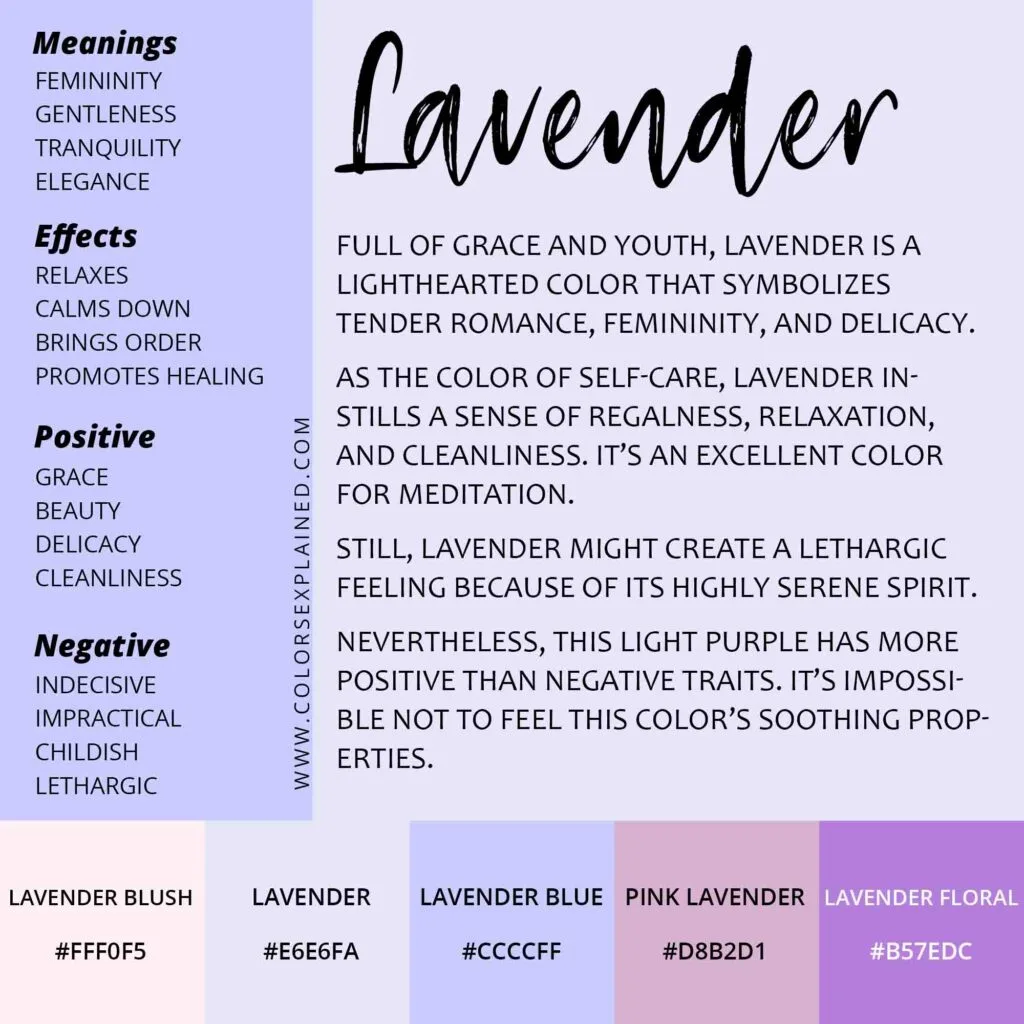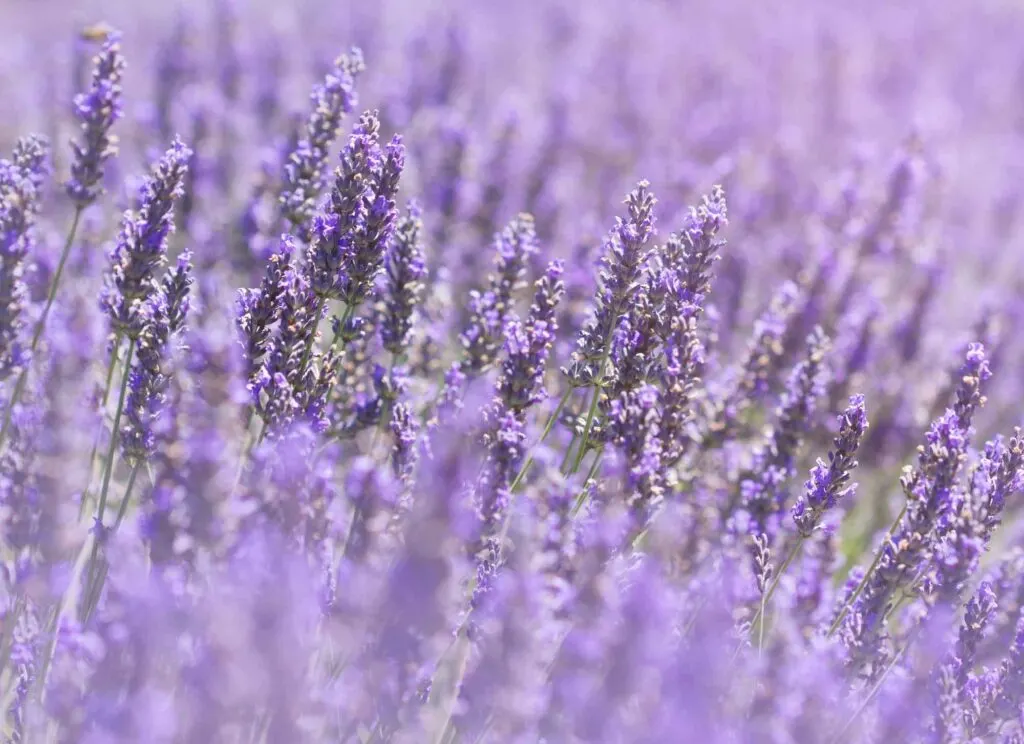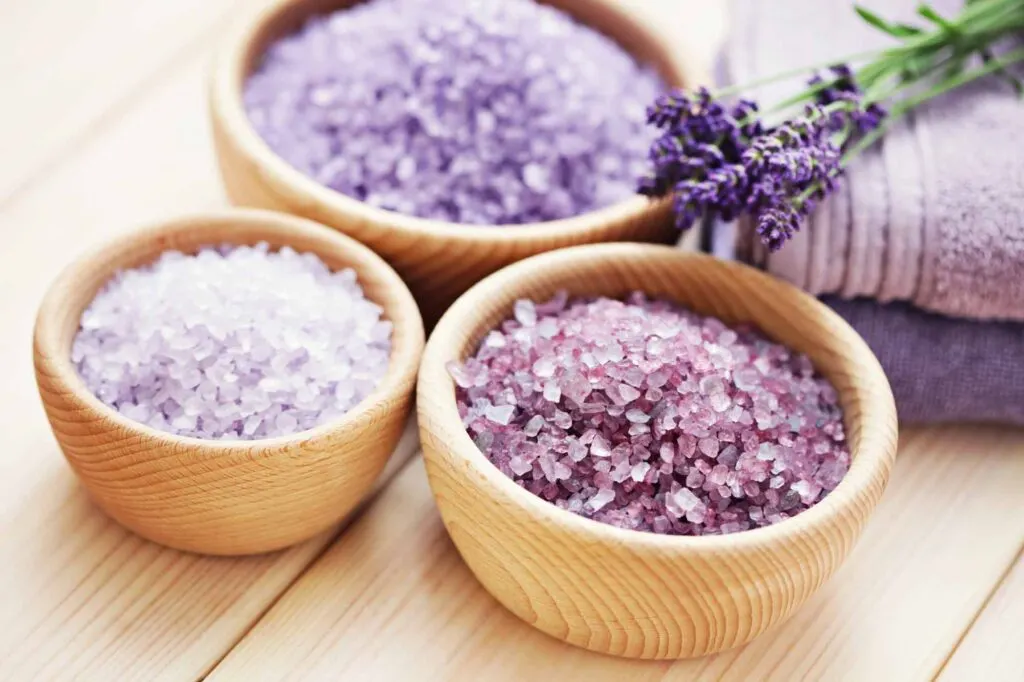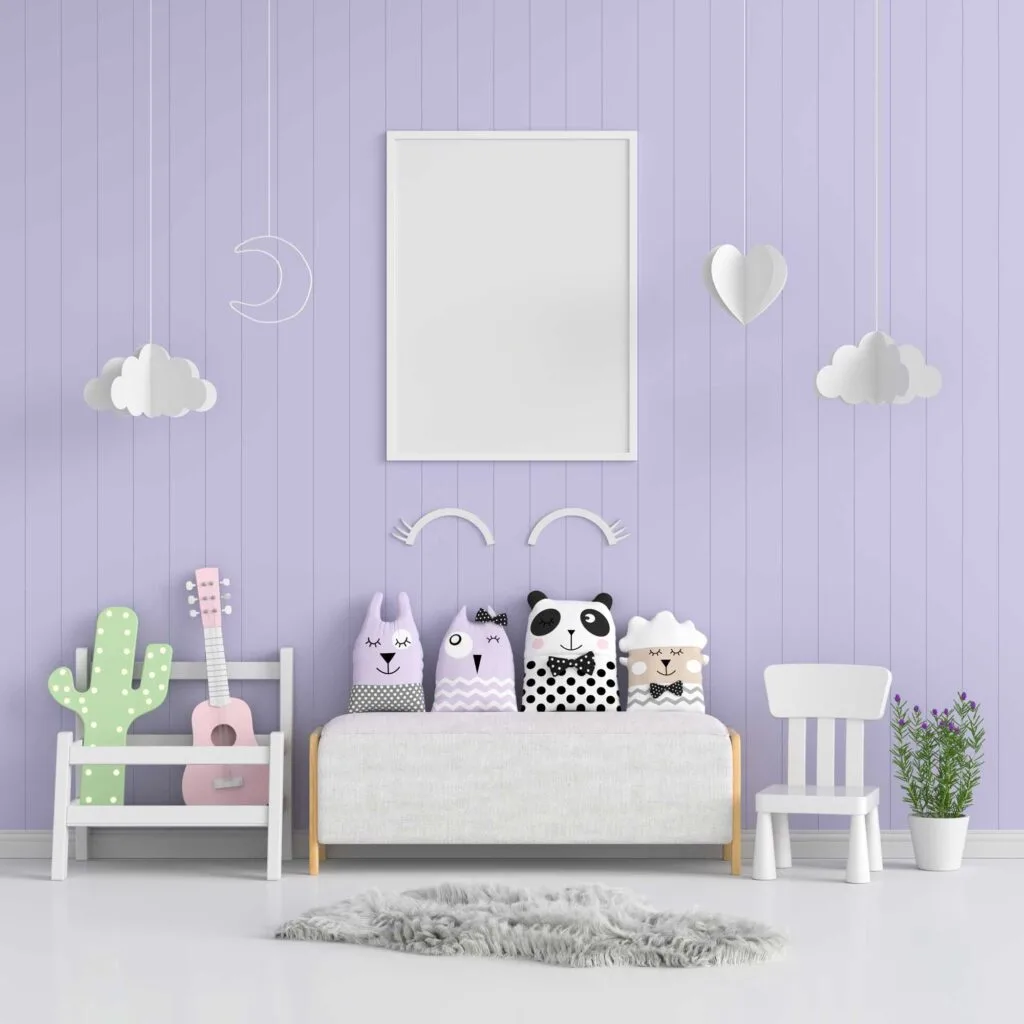Lavender is the color of femininity, gentleness, and tranquility
As part of the Color Meaning Series, we’ll talk about the symbolism and the meaning of the color lavender in today’s article.
For more colors, check out our guide on color meanings.

Where can we find the meaning of the color lavender?
Is it in the perfumed fields of lavender or the scented candles in a religious ceremony? Maybe it is in the soothing essential oils or the healing bath salts.
Lavender is a soothing color that earned its name from the flower. It’s considered a floral symbol of love at first sight, but it has many more meanings, as we will see in this article.
Today, we’ll talk about the symbolism and meaning of lavender, its most common uses, and facts–all about the relaxing lavender.
Lavender Color Symbolism in Different Cultures
- The color lavender’s meaning is intrinsically linked to the origins of its name: the flowering herb that hails from the Mediterranean region. This herb is a light purple, though the color itself is often also referred to as “thistle,” “orchid,” or “plum.”
- In Christianity, youth and vitality are linked to the meaning of the color lavender. Light purple is a key color marking Easter in the springtime, which is a celebration of Christ’s rebirth and the onset of spring. Lavender also carries the symbolic meaning of optimism at a new stage of life, shutting out negativity and worry.
- Some people think the word “lavender” comes from the word “lavare,” meaning “to wash,” since lavender is often used as an essential oil or in bathing and self-care products due to its relaxing scent. This can also be thought of figuratively; lavender is an excellent color for creating a refreshing blank slate. Its association with springtime and Easter (and, by extension, the resurrection of Christ) furthers this association.
- Lavender is often used around the world in nurseries and children’s bedrooms. It’s considered to be a more mature version of baby pink.
- In North America and Europe, lavender’s meaning is synonymous with springtime.
- Lavender is also the color of royalty because it is so rare in nature. Naturally-derived dyes were reserved for the elite (until relatively recently when industrial dyes made it possible for the masses to have purple-colored fabrics).
- The ancient Hebrews saw lavender as a holy color. The herb was used as a key component of their ritual anointing oil. It’s even mentioned in the biblical Song of Solomon.
Psychological Meaning of Lavender
A bold color that, for centuries, has captivated many, magenta is a mixture of violet and red.

Lavender Color Meaning
Here’s some insight into the meaning of lavender according to color psychology.
Elegance and Grace
Thanks to the color purple’s association with royalty, lavender carries a sense of regalness with it. It’s such an elegant color!
However, since it’s a lighter, cooler shade of purple, it’s less intense than most other shades. This gives it a sense of lightheartedness along with its dignity.
Beauty and Femininity
Lavender is often seen as a more grown-up version of the color pink. It evokes delicacy, nostalgia, and a romantic atmosphere – you often see it in regency films and artwork for this reason.
Lavender is also often seen at weddings, signaling a celebration of lighthearted, tender romance.
Relaxation, Cleanliness, and Healing
The lavender plant is associated strongly with soothing and relaxation. Imagine how hard it is to be stressed when you’re taking a warm bath with fresh lavender and bath salts steeping in the water with you.
This sense of tranquility, calmness, and ultimate serenity will follow you everywhere you go if you keep lavender around you.
However, lavender may create a lethargic feeling when used in abundance.

Lively, Attention-Grabbing
Despite its soft-spoken nature, lavender is still a shade of purple, and that means it still pulls the eye toward it wherever it’s placed.
A Regal Nature
Thanks to lavender’s association with monarchy, kingship, and status, it carries a slightly rich feeling similar to the purple color.
But because lavender is lighter and more diffuse than most tones of purple (especially the rich hues most strongly associated with royalty), lavender’s regal nature is more toned down and less intense.
In addition, lavender is a little impractical and indecisive in nature, having a greater inclination towards spiritual aspects than the mundane world.
Youth
The lavender plant grows during springtime, which is a time of new beginnings.
Lavender is often used to decorate children’s rooms and nurseries. Lots of little girls’ toys are lavender-colored.
Step into any toy store, and you’ll find a lot of the gendered toys either pink or lavender. This can be seen as youthful and refreshing. It can also be seen as childish.

Productivity and Creativity
Despite its soft femininity, lavender is an industrious color. It stays on its toes, encouraging creativity and productivity everywhere it goes.
Physical Effects of Lavender
- Physically, lavender is extremely mild on the eyes. It’s not too harsh or bland, making it very easy to look at. That means it can be used in abundance throughout your environment without suffering eye fatigue and without it draining your energy.
- Lavender doesn’t just make you feel relaxed; having it around during meditation can actually help you relax better, letting you achieve a deeper meditative state. If you have a meditation space, try incorporating lavender into the décor. This is supported by the fact that lavender usually has bluish undertones. As we all know, blue is excellent for helping you relax your mind, body, and soul.
Shades of Lavender
Here are the most common lavender shades with respective hex codes.
Lavender: #E6E6FA
Lavender Blush: #FFF0F5
Languid Lavender: #D6CADD
Lavender Gray: #C4C3D0
Lavender Blue: #CCCCFF
This shade of lavender has a subtle blue tint, making it a very relaxing color.
Lavender Floral: #B57EDC
Pink Lavender: #D8B2D1
This shade of lavender has a subtle pink tint, evoking femininity.
English Lavender: #B48395
Twilight Lavender: #8A496B
Old Lavender: #796878
Most Common Uses of the Color Lavender
- Female self-care products
- Cleaning products where the fragrance is a central selling point
- Floral scented products
- Wedding decoration
- Children’s room decoration
- Gendered toys
Facts About Lavender
- The name lavender comes from the Latin verb “lavare,” which means to wash.[1]
- The colors lavender and yellow represent the Christian holiday of Easter because the crocus flower, which is lavender and yellow, blooms in Europe in the spring.
- In the meaning of the flower colors, lavender means devotion. However, lavender roses are associated with love at first sight.
Lavender means: beauty, gentle, and tranquil
Effects of lavender: eye-soothing, relaxing, and gives a sense of order
Positive traits: elegance, femininity, and relaxation
Negative traits: childish, lethargic, and indecisive

Chuka Dominion
Thursday 24th of August 2023
I love the color